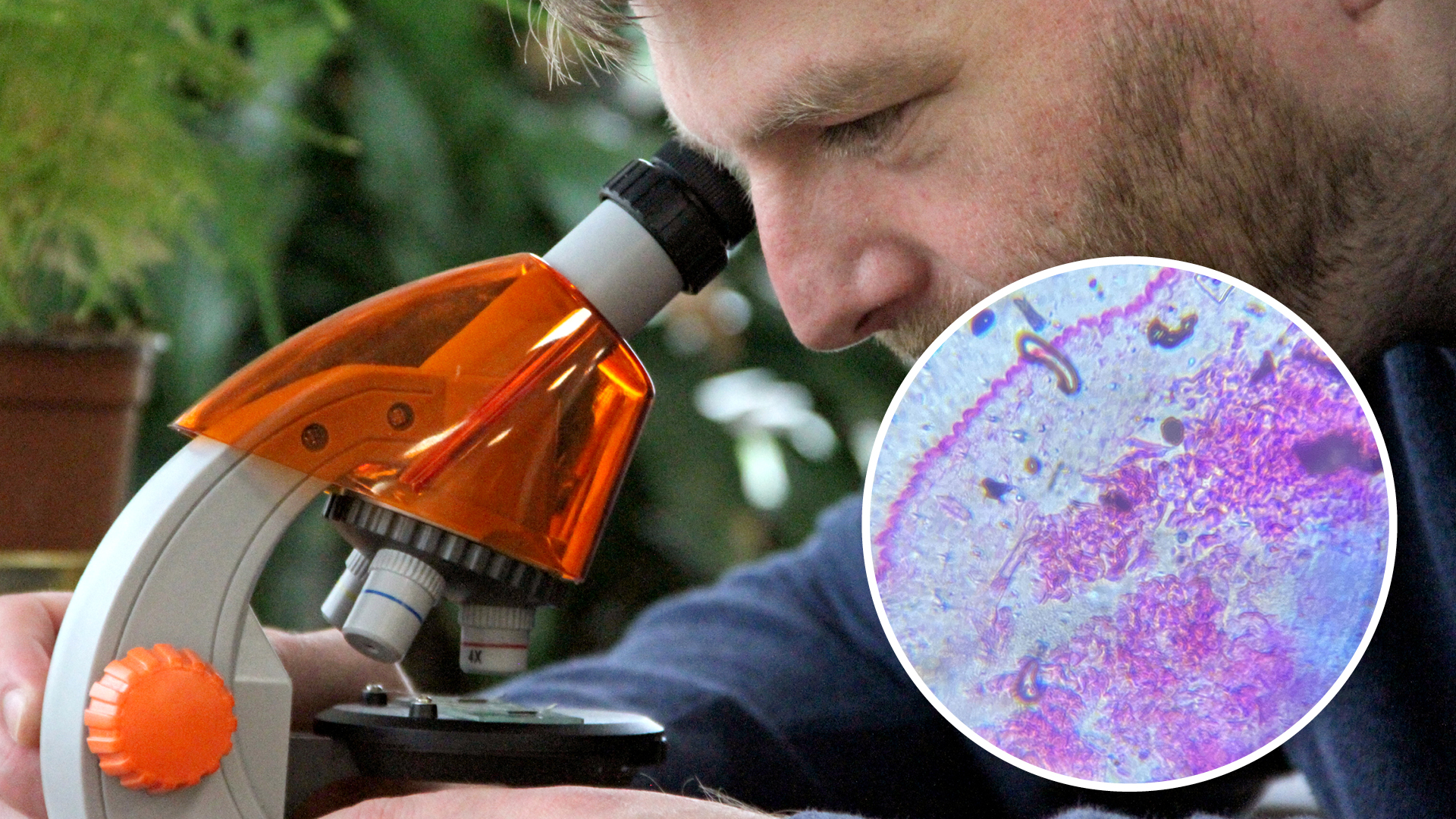
Seeing the Levenhuk Labs M101 microscope for the first time, you’d be forgiven for thinking you’d fallen into a Luc Besson film – with thick plastic controls and brightly coloured shell, this microscope is something straight out of a sci-fi movie. But hidden behind the thick plastic and vibrant colour is a genuine scientific instrument that could open up the microscopic world to families on a tight budget.
Founded in 2002, Levenhuk is an American manufacturer of optic devices, paying particular attention to kits for children with the LabZZ trademark. In June 2016 it released the first products in this series, including the Levenhuk LabZZ MT2 Microscope, Telescope Kit and this microscope. You’re probably wondering, how much does a product suffer when it's directly marketed towards children? Let’s find out.
Features
- Magnification: 40 – 640X
- Head: Monocular, inclined 45 degrees
- Optics material: Optical plastic
- Body material: Plastic
- Eyepiece tube diameter: 30mm
- Eyepieces: WF10x – WF16x
- Revolving nosepiece: 3 objectives
- Objectives: 4x,10x,40x
- Stage: 82mm diameter, with specimen holders
- Stage moving range: 0 – 15mm vertical
- Focusing: Coarse
- Additional: Diaphragm disk
- Illumination: Lower LED with adjustable brightness
- Power source: 2xAA batteries
- Experiment Kit
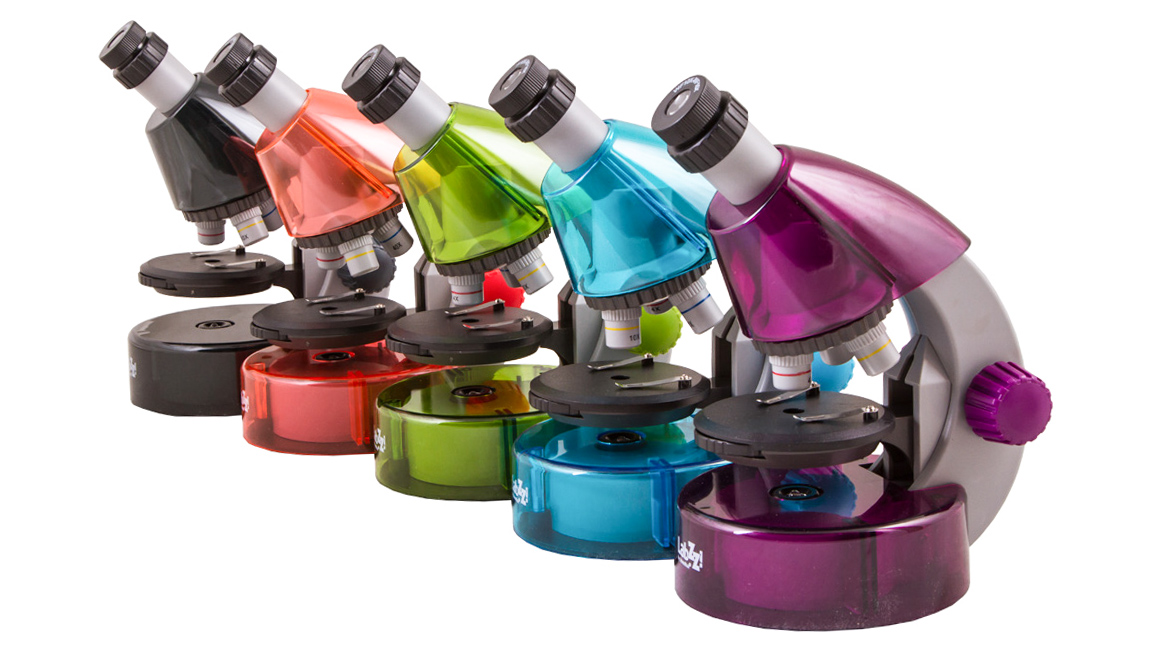
Specifications
Price
If the appearance wasn’t enough of a clue as to the audience, then the price tag should make it obvious. You can find this microscope for around £40-£50 in the UK (around $85 in the US, and AU$100 in Australia), putting it slap bang in the gifting price range, for a birthday or high-end stocking filler from doting grandparents. All things considered, this is a remarkably cheap price for a compound microscope of any quality and it’s unlikely you’d be disappointed.
Although I don’t agree with the overuse of plastic, you can’t escape the mindset this feels like a disposable piece of equipment that can be discarded or upgraded once used. For similar money you can pick up a dissecting microscope, which is perhaps easier to pick up for kids and more likely to illicit wonder with larger 3D specimens.
Build and handling
When buying a microscope, picking a color isn’t usually the first thing you think about, yet the LabZZ series stands out because of its bright range of retro colours. Reminiscent of the old Apple iMac G3, the M101 is available in Moonstone, Orange, Lime, Azure and Amethyst. I tested the orange model and found it quite charming (there was no chance of ever losing sight of it in my flat). It’s certainly something I would have picked up and played with as a child.
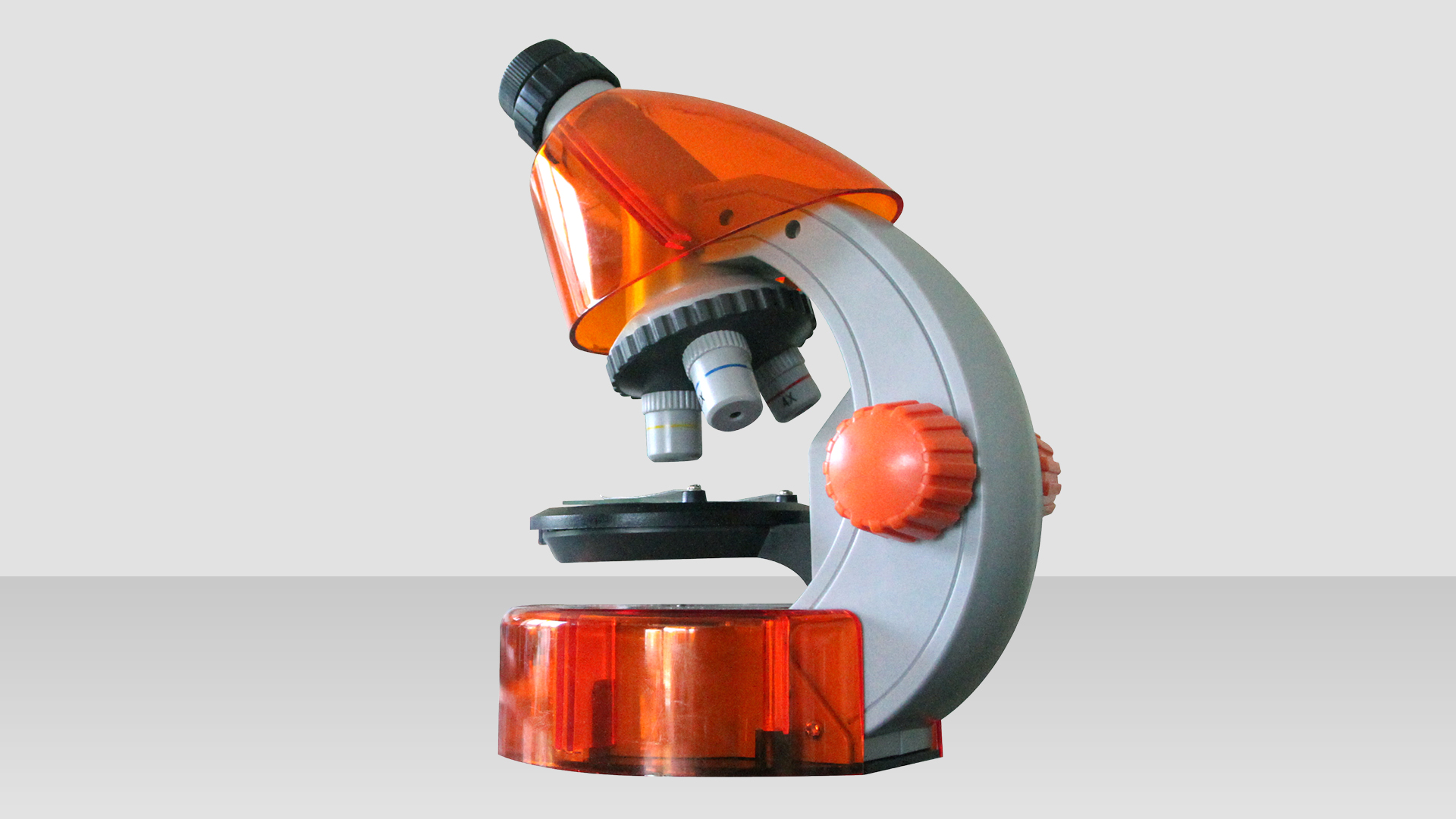
The body is small and compact, minimising on small moving parts that can easily be lost, broken or swallowed. This makes it ideal for young children, who are less likely to engage with plainer, more complicated models. It is primarily composed of hard plastic, so while it feels cheap, it should survive being dropped or thrown around. The benefits of a material like this is that the body is lightweight, tactile and durable. It's designed to be used straight from the box, meaning it's also quite hard to take apart or get inside (not that you would have to aside from replacing batteries).
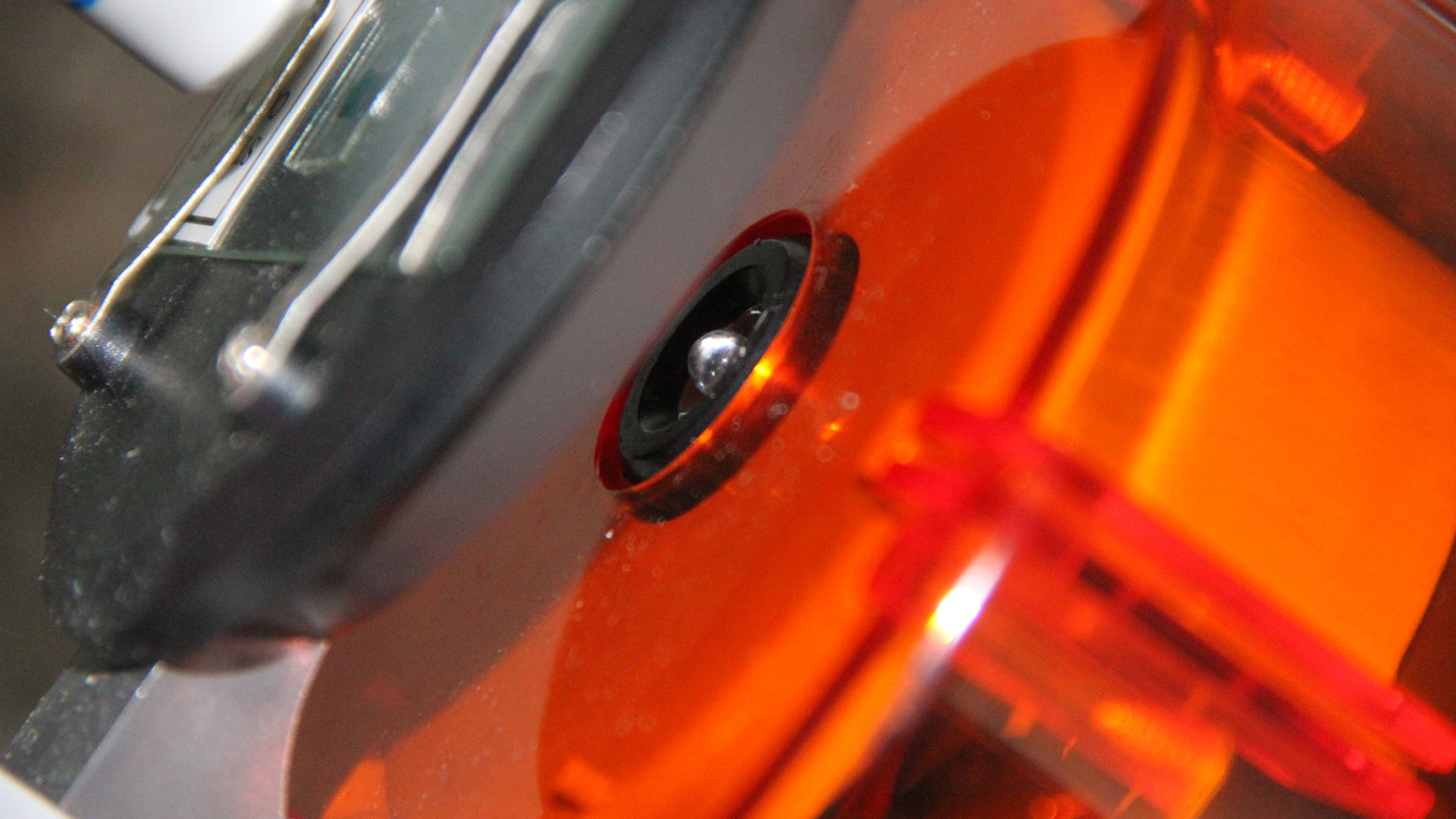
The head is inclined at a comfortable viewing angle of 45 degrees and is protected by a transparent plastic hood (the purpose of which is unclear). This slides up and down for access to screws in the neck, but doesn’t quite go far enough up to allow easy reach of the upper screw.
The LED light is fixed in the lower carapace, where it provides just enough light to view the higher magnifications. It is controlled by an adjustable wheel on the side, allowing you to regulate the power, which gives a satisfying click as it turns on and off. An LED lasts longer than halogen, is more portable and safe for kids.
There is no reflecting light on this microscope, only transmission, so you’re limited to viewing transparent objects on a slide.
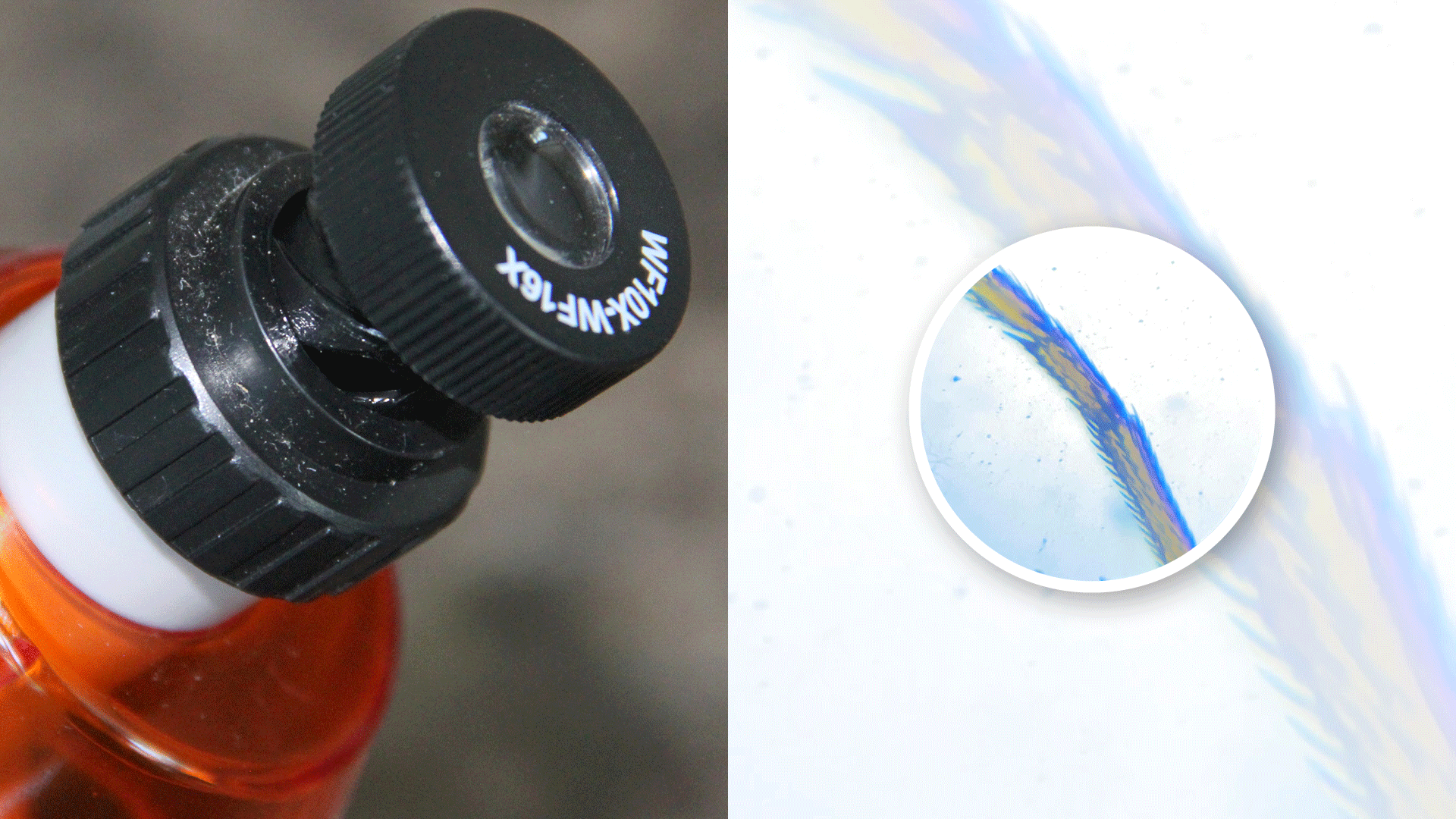
The two-position eyepiece means you can switch conveniently between magnifications without having to swap them out. This will save the eyepiece from the perils of sticky hands, but usually comes at a cost to the quality of image, compared to two separate, bespoke lenses. This microscope is not compatible with other cameras or eyepiece lenses, as the eyepiece is fixed in place and cannot be removed.
There are three objective lenses, 4x, 10x and 40x, which are all removable. Both the barrels and lenses are made from plastic, which can impact performance. These are mounted on a rotating wheel and switching between them is smooth.
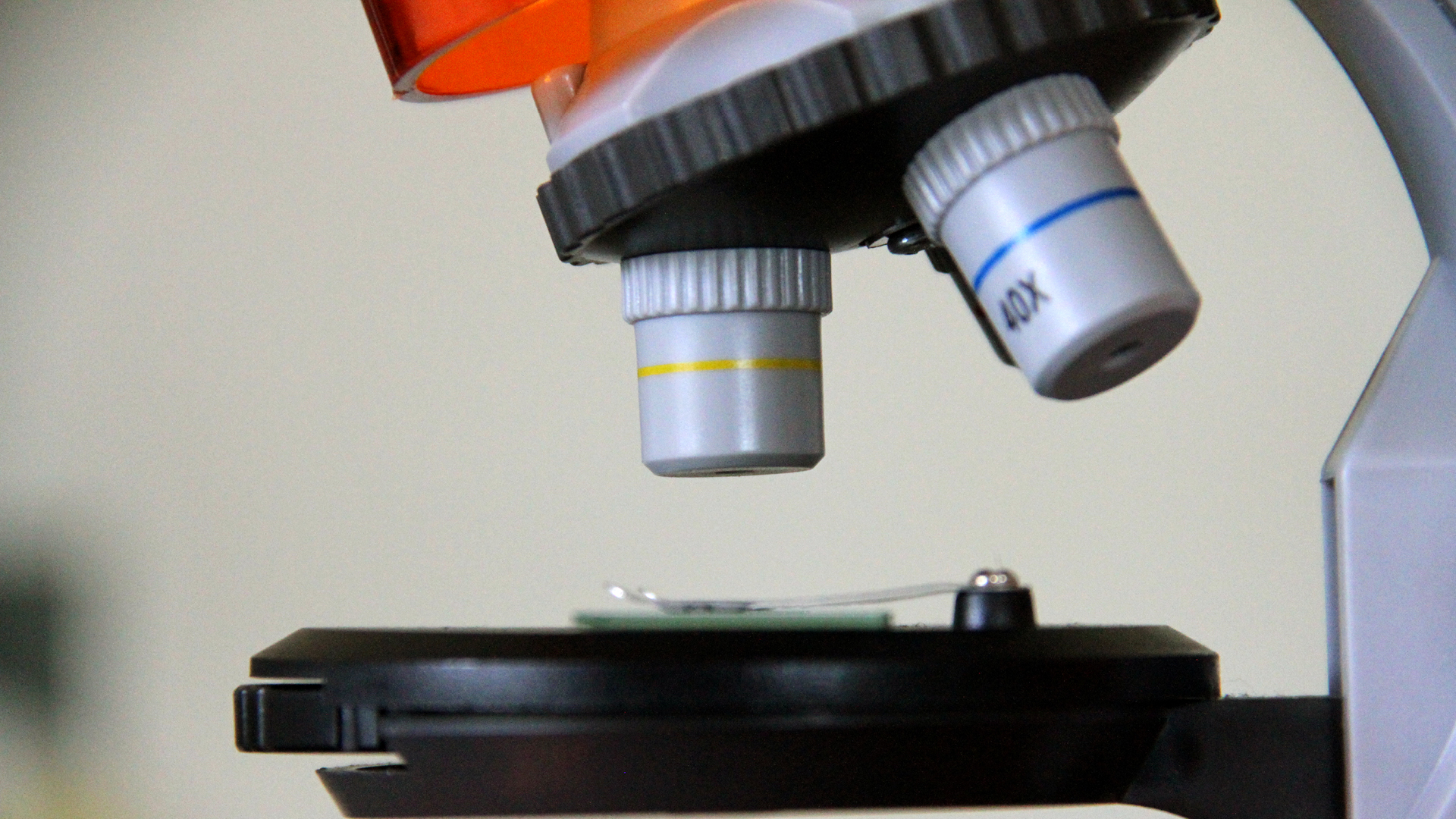
Focus is controlled by one coarse focusing knob on the back stem of the body. On the whole this serves well enough for the job, though at higher magnifications you might find it harder to focus.

Slides are held into place by clips, a cheaper alternative to a mechanical stage. It is a little fiddly getting slides on and off the stage and, without an XY control, you have no option but to manipulate the slide position with your own fingers.
The microscope comes with an Experiment Kit for creating your own slides, including brine shrimp, sea salt, yeast, dropper, microtome, hatchery and forceps. It also comes with five pre-prepared slides and five empty ones to create your own. There are no coverslips provided, so you are limited as to how much you can do with them.
The user guide that comes with this microscope is clearly made for their entire series, as it references features that aren't available on this model, however it is informative and useful to beginners.
Performance
The objective lenses are made from plastic and it’s no surprise the image quality is not great. Each magnification had issues with sharpness – I never managed to get a really sharp image. The lenses suffered from chromatic aberration and a little warping around the edge.
The nosepiece was not perfectly parallel to the stage, so you don’t get an even focal plane across the image. It goes without saying that they are not prepared for oil immersion (but I wouldn’t expect them to be). These issues would be more of a concern to someone using the microscope in a lab or for experiments, but they should be sufficient for casual observers.
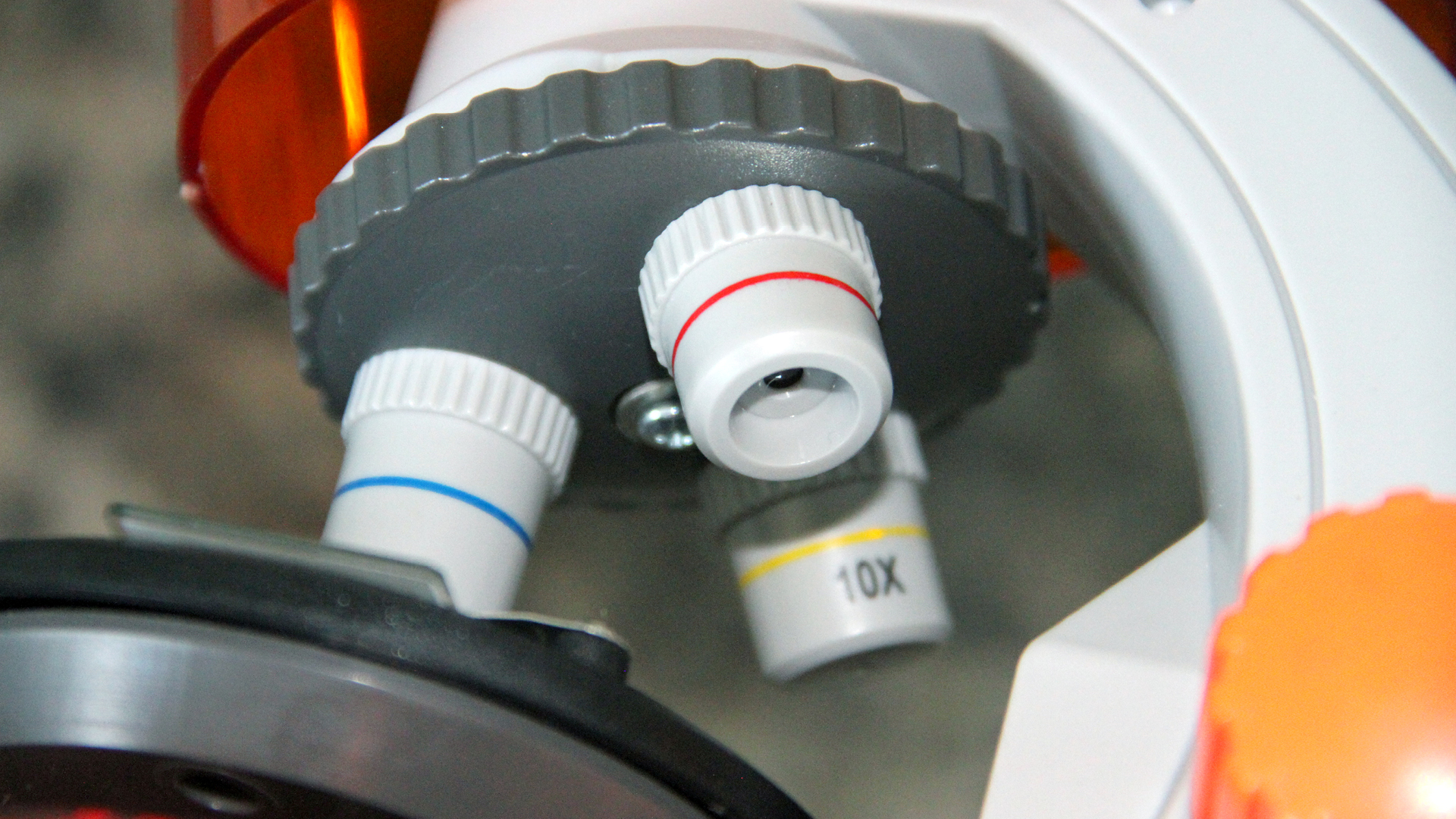
With nothing but a coarse focus control, I found it difficult to control precise focusing, having to drift in and out to find the perfect focus point. At the highest magnification the 40X eyepiece comes into contact with the slide, which could end up damaging both or either.
The parcentrality was inaccurate going between all three lenses, while parfocality was generally OK. This wasn’t helped by the fact the view was affected every time you touched the microscope. The stage itself is quite flimsy, moving about and shifting out of focus. This was especially noticeable when turning the diaphragm disk. The diaphragm disk itself adds little value, with barely noticeable differences between each.

Verdict
Reviewing this microscope was never going to be easy – it's very hard to compare with other models that cost two or three times the price. Although some of the elements are of low quality, it still achieves a degree of success in producing clear, magnified images. I wouldn't recommend this product for anyone wanting to get into microscopy seriously, but it does seem ideal as a gift for a child.







